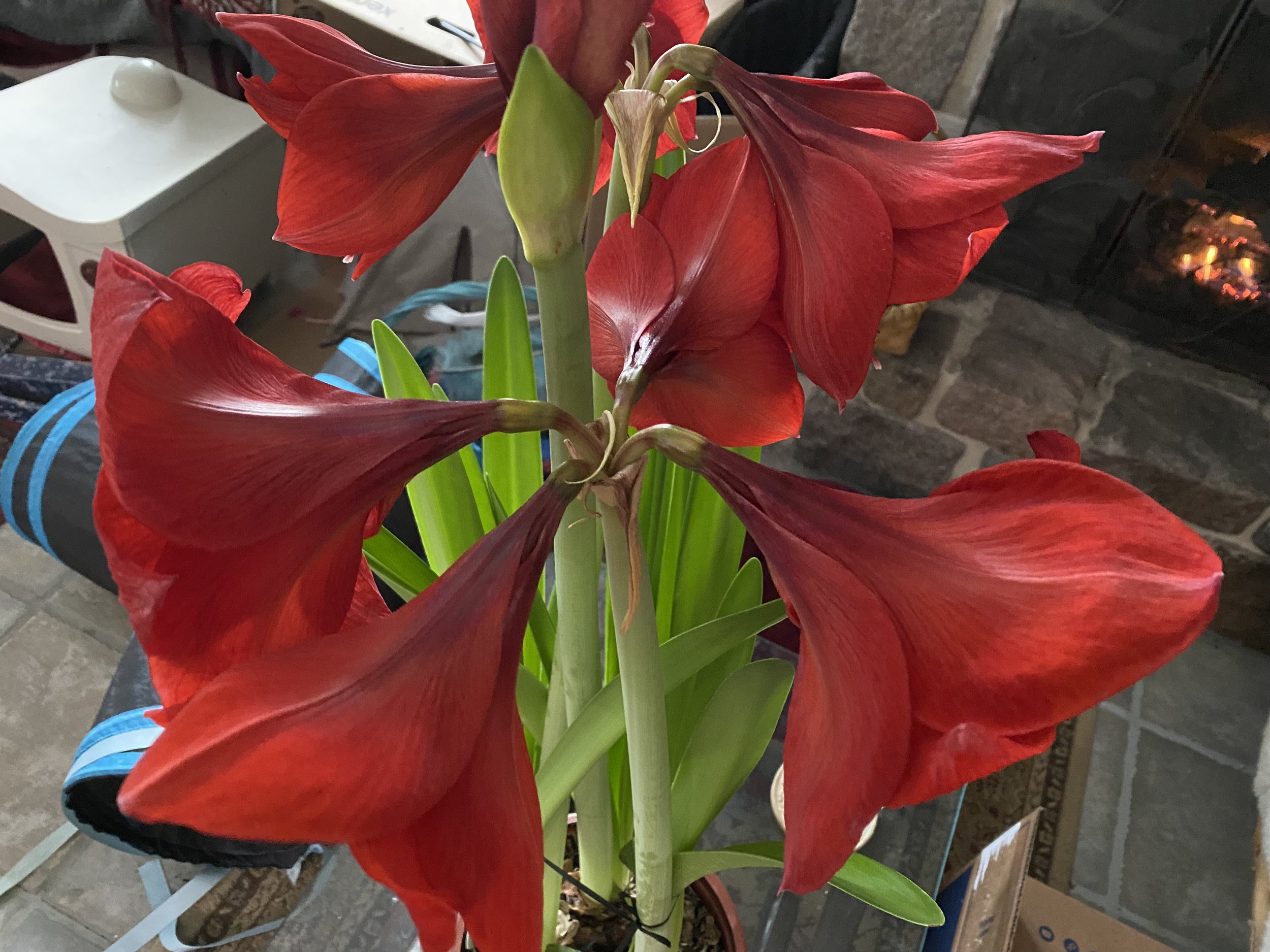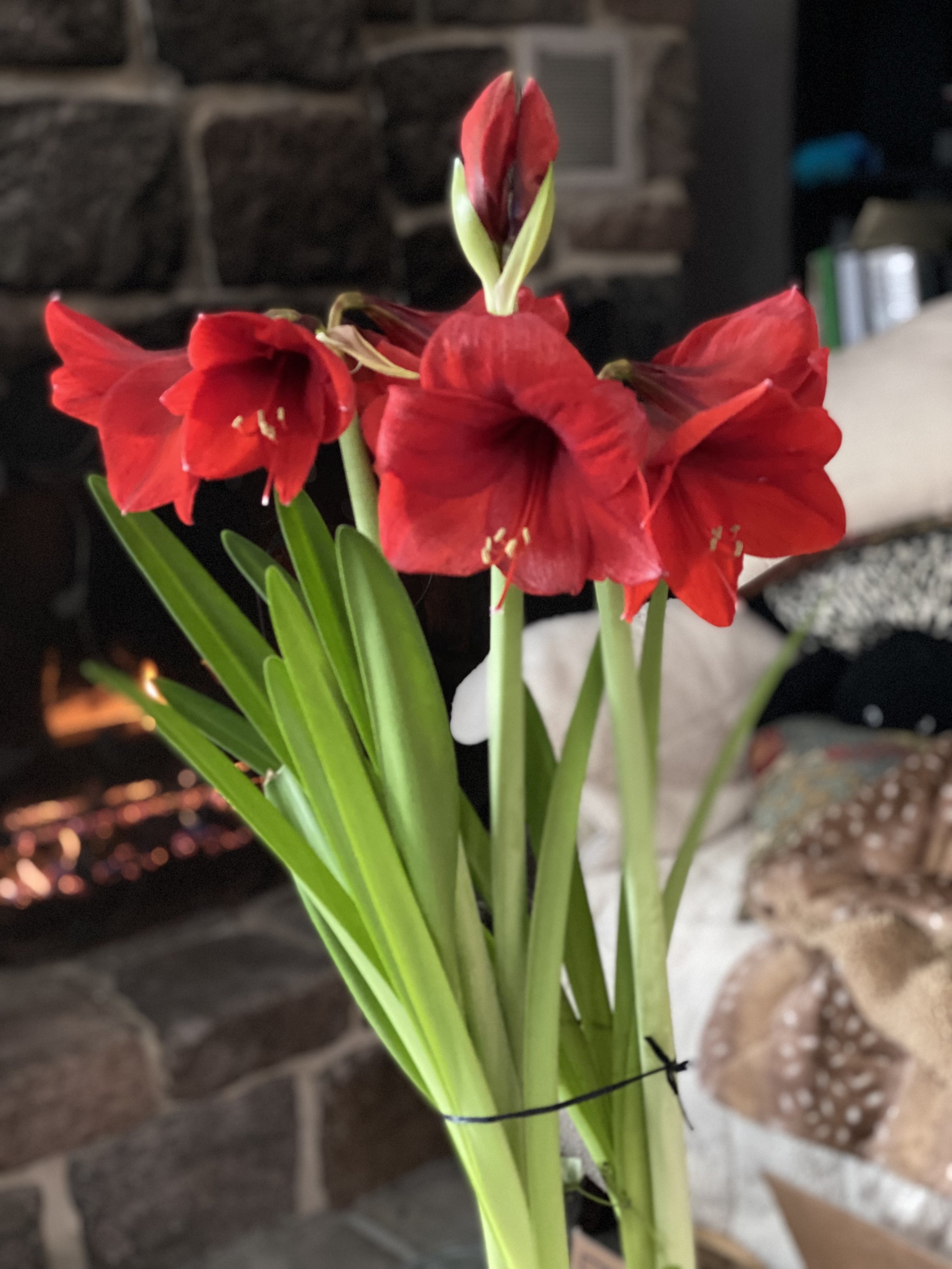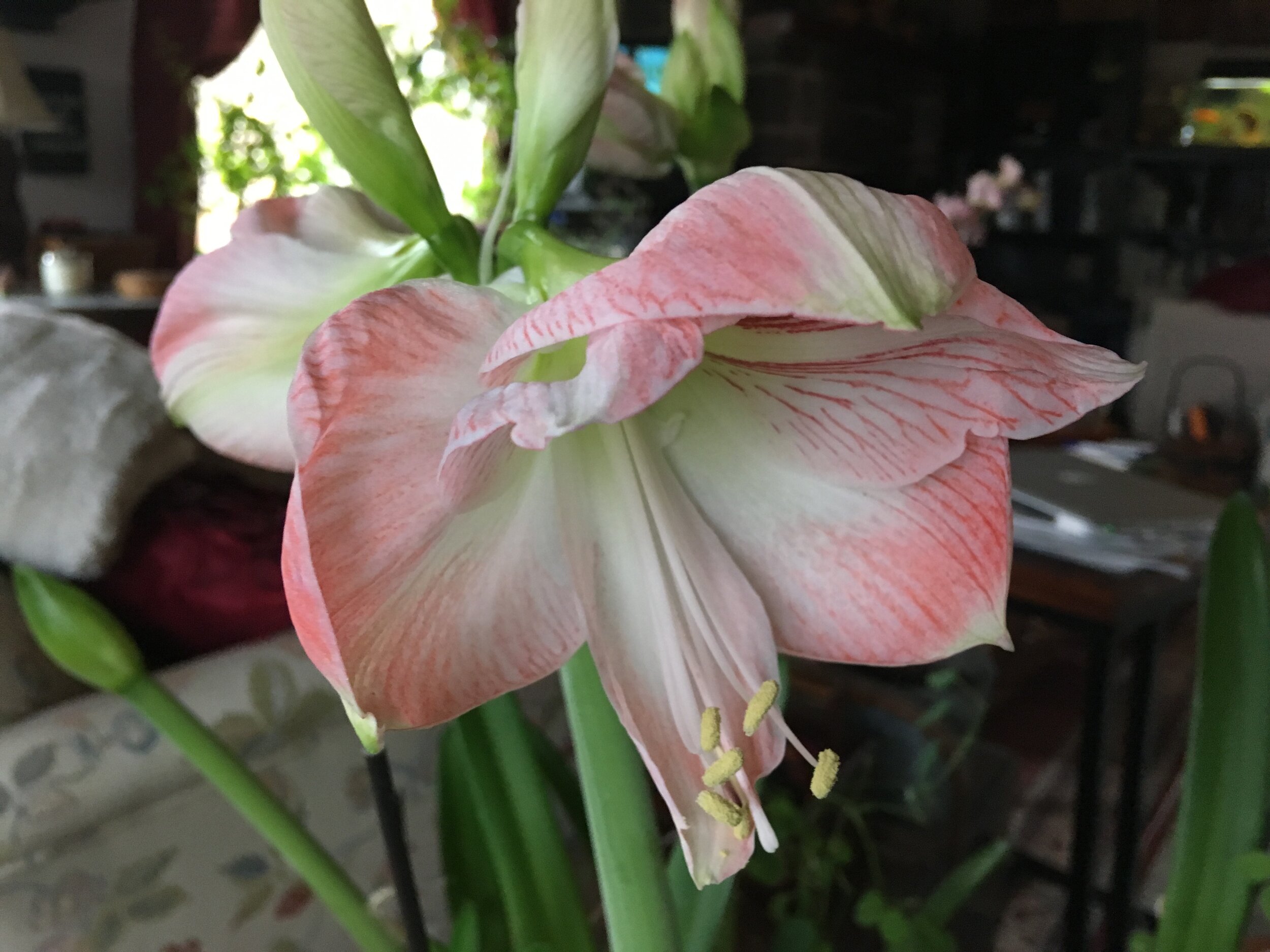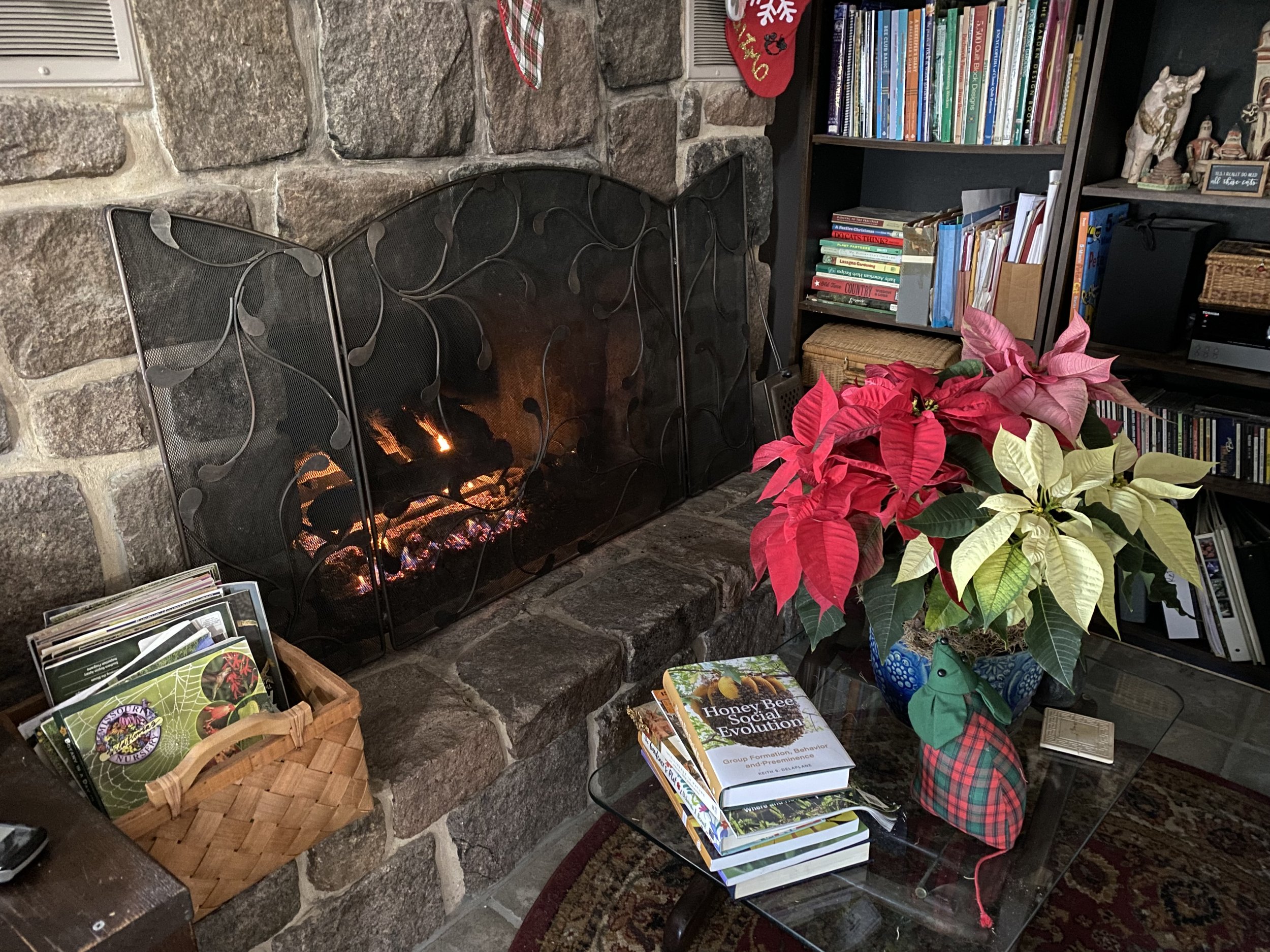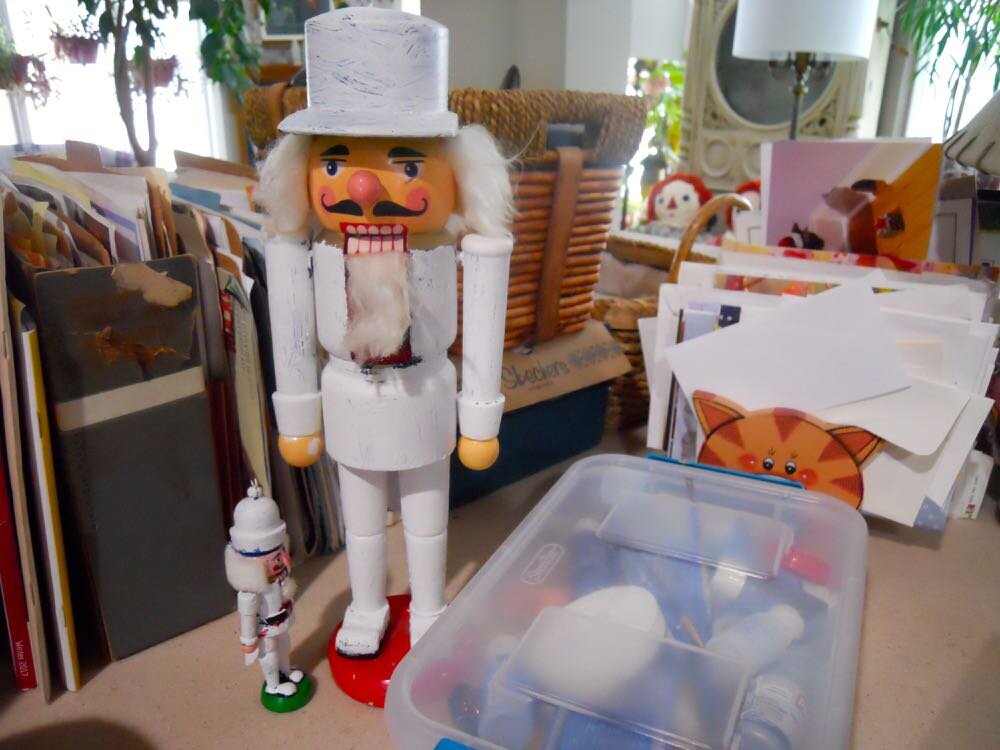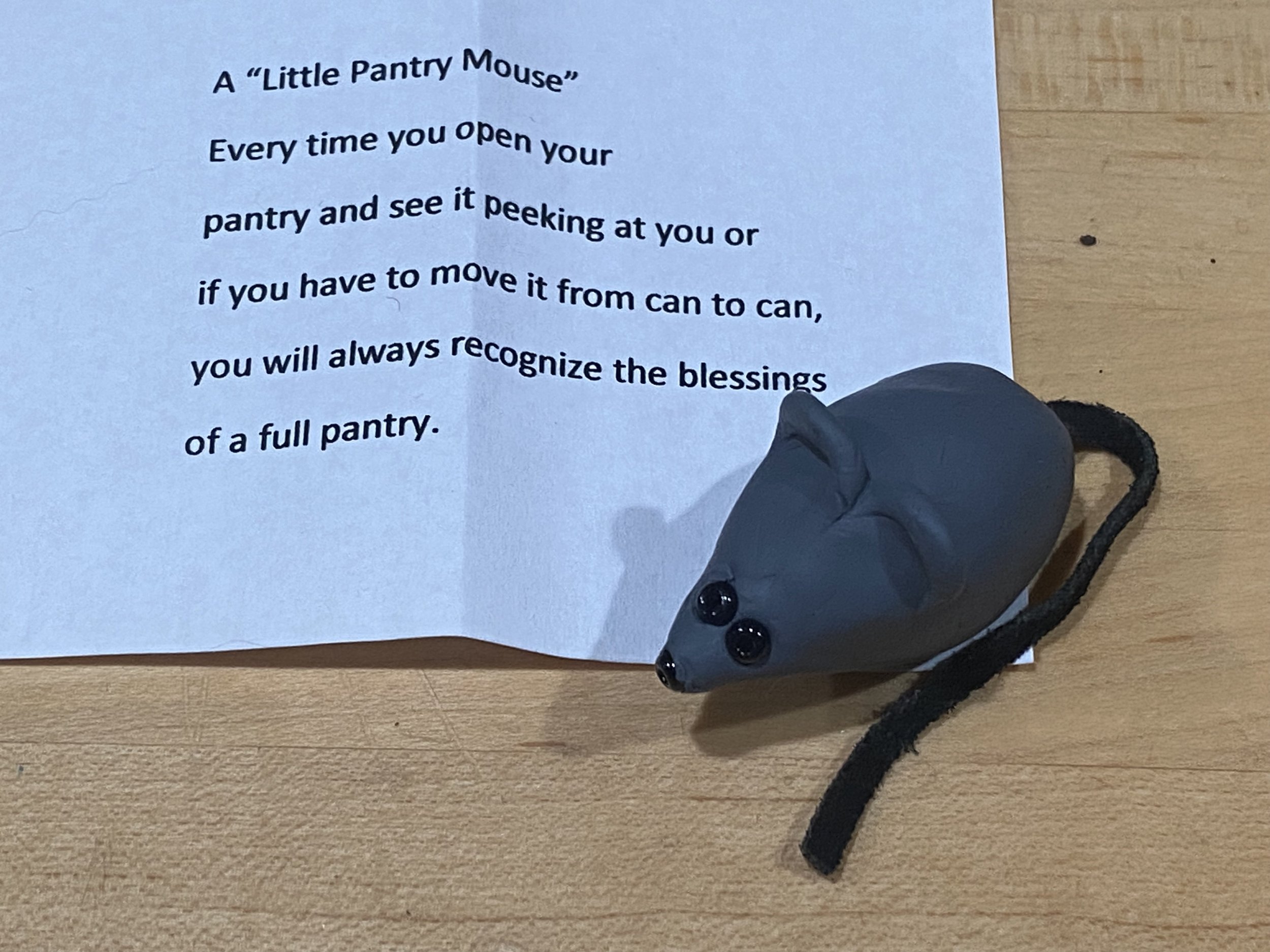Do Amaryllis Re-Bloom?
/These Red Lion Amaryllis bulbs have re-bloomed for several years. (Charlotte Ekker Wiggins photo)
“Charlotte, I see your lovely Amaryllis pictures on Facebook. Are those Amaryllis bulbs you purchased or bulbs you’ve made re-bloom? I’m going to be sick if they re-bloom, I’ve tossed far too many away….” — Sally
Do Amaryllis Re-Bloom?
Hi Sally,
Amaryllis do certainly re-bloom but they do need a little time and patience. Some people have given me Amaryllis bulbs they were about to toss because they buy new ones the following year. Sorry you missed out on trying this with your previous bulbs but here’s how to care for your Amaryllis bulbs so they re-bloom.
Keep an eye out for new buds, they can show up in the middle of blooms. (Charlotte Ekker Wiggins phto)
First, once they do bloom, or you find spent bulbs on sale, get them in pots and let the leaves grow. Do keep an eye on the bulbs because they can throw a second bud without you knowing it, especially if you have a lot of leaves.
This is an old-fashioned Red Lion Amaryllis, popular at Christmas. (Charlotte Ekker Wiggins photo)
The showy flowers — and they are stunning — will have leaves following the blooms. The leaves are solar collectors, gathering sunshine to store as energy in the bulbs. The leaves can remain on the bulb for many months so that’s where patience comes in. You have to wait for the leaves to die off on their own. I still have a large pot of Amaryllis bulbs growing leaves from last year so I won’t see those blooming for awhile longer.
Once the flowers fade, cut the flowers off at the top of the bulb. Leave the growing leaves and keep them watered and fertilized. I use half the strength the fertilizer recommends; any multi-purpose fertilizer will work.
Amaryllis bulbs sometimes extend the bloom by budding at different times. (Charlotte Ekker Wiggins photo)
Once the danger of frost is over, I move my Amaryllis bulbs still in their pots outside to a shady area so that they can continue to grow and collect energy from the sun.
When the Amaryllis leaves die off on their own, here’s the second key step: don’t water them for a couple of months.
I have removed the bulbs out of their pots and saved them in a brown bag. I have also just left them sit in their pots without getting watered so do whatever fits your schedule, and your space.
If you bag the bulbs, you can then re-pot and water for when you want them to bloom. It takes 4-6 weeks from when they start budding at the tip of bulb to when they bloom.
Regardless of whether in a bag or pot, check them periodically for any signs of growth. Once you see a little green tip showing up at the top end of the bulb, that’s the sign the bulb is ready to start growing again.
Now they may start showing green and not have a bud. If you look closely, you can tell the difference between a flower bud where the tip is thicker and leaves, where the green tip is thin. If its just leaves growing, that means the bulb did not collect enough sunshine to re-bloom. Don’t toss it out, just let the leaves grow and collect more energy.
If you leave them in pots, start watering again after 8 weeks of a dry spell.
I find it easier to leave mine in their pots. I may remove the bulbs and either repot in new soil or add soil to existing potted bulbs to refresh their growing medium. Make sure only their roots are covered. You want the bulb to be sitting on top of the soil, not covered in soil.
I usually have to tie up the flowers and leaves to keep them from taking over. (Charlotte Ekker Wiggins photo)
It helps to keep a few long thin sticks around to tie up the 2-3 feet high top heavy flower stems. If you have the space, let the leaves drape, they are quite lovely when they do. I happen to have cats who would take draping leaves as an invitation to wrestle so I have them tied up.
If you happen to break a stem, don’t worry. Amaryllis make lovely cut flowers.
Hope this helps, let me know how your next Amaryllis bulb does when you try to help it re-bloom!
For more tips on gardening, beekeeping, cooking and easy home decor, subscribe to my weekly Garden Notes.


